Abstract
Eight sodium dithiocarbamates (NaS2CNR1R2) have been examined as antidotes for acute cadmium intoxication. While all of them possess an ability to increase survival when given to mice 2 hr after a lethal (greater than 99%) intraperitoneal injection of 10 mg/kg of CdCl2 X 2.5H2O, their effects on the organ distribution of cadmium vary considerably. It has been possible to show that the accumulation of cadmium in the brain and kidney as well as the survival rates can be correlated with a numerical measure of the polarity of the groups R1 and R2. Each factor has a different dependence on the polarity, but it is possible to construct a composite factor for antidotal efficacy which incorporates survival rate, brain cadmium levels and kidney cadmium levels. The factor constructed here exhibits an optimal value approximately in the middle of the polarity range studied. Compounds which have R1 = -CH2CH1OH and R2 = -CH2CH2OH, or -CH3 or -C2H5 appear to be the most effective antidotes of the compounds examined.
Full text
PDF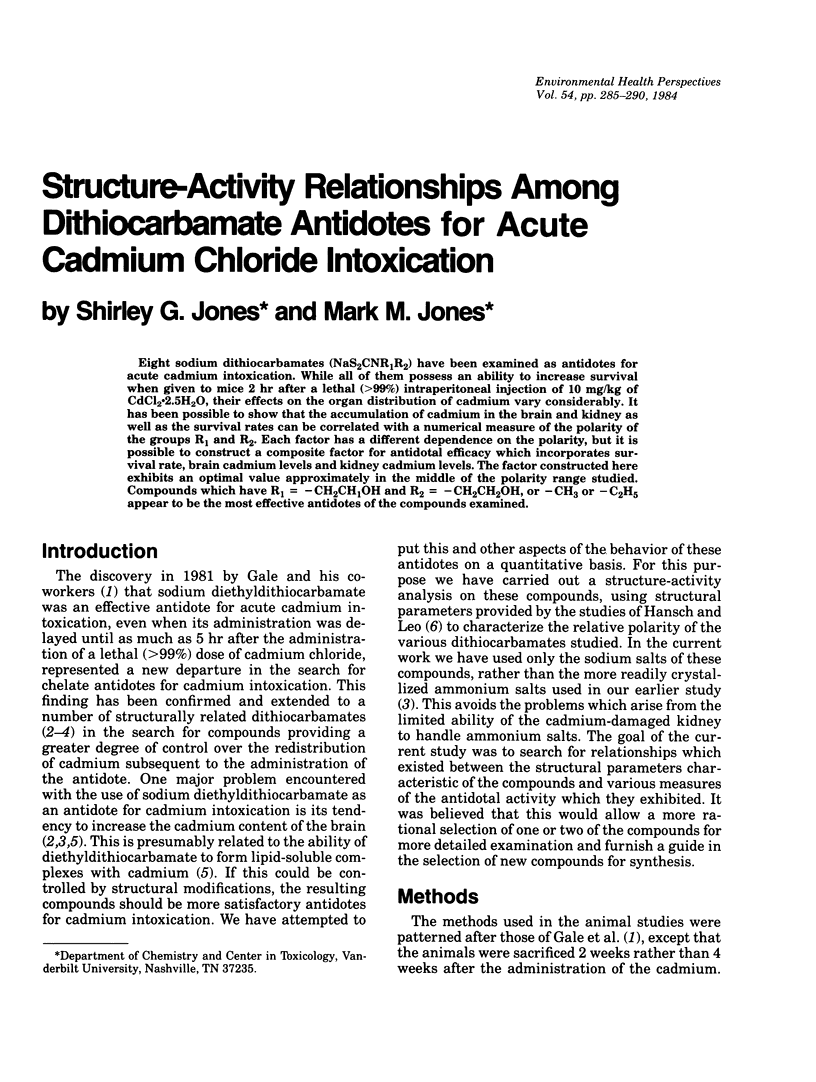
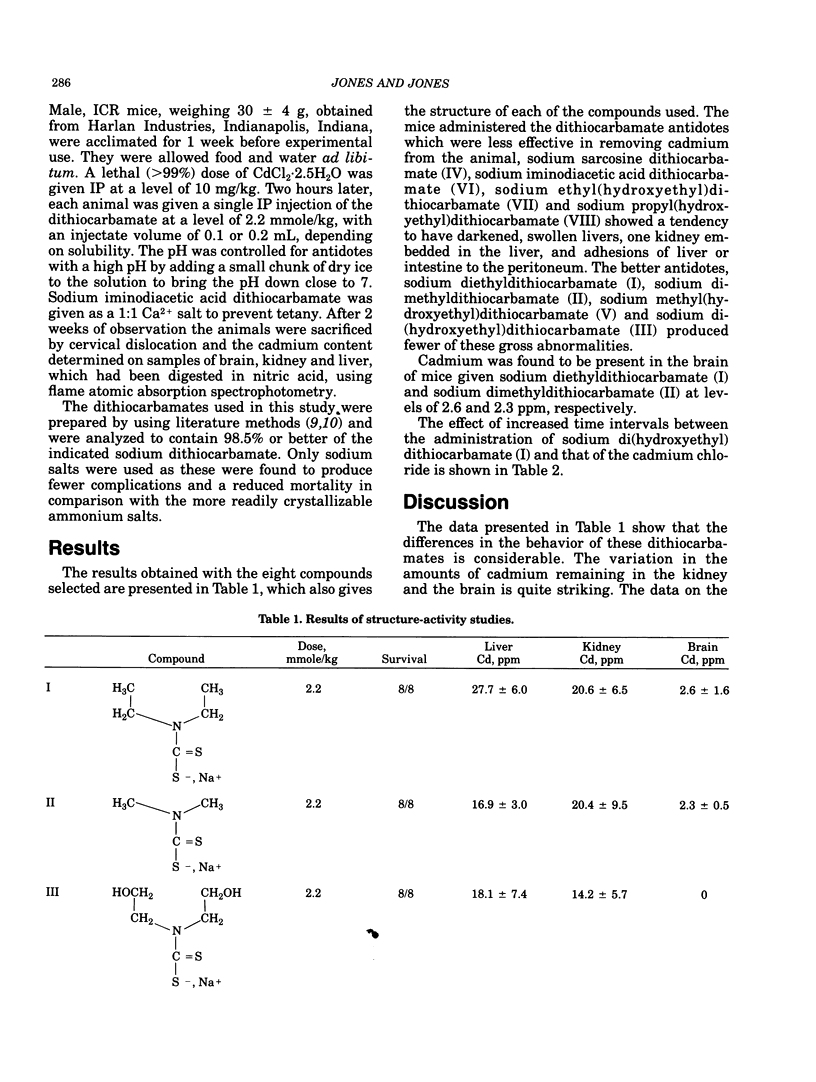
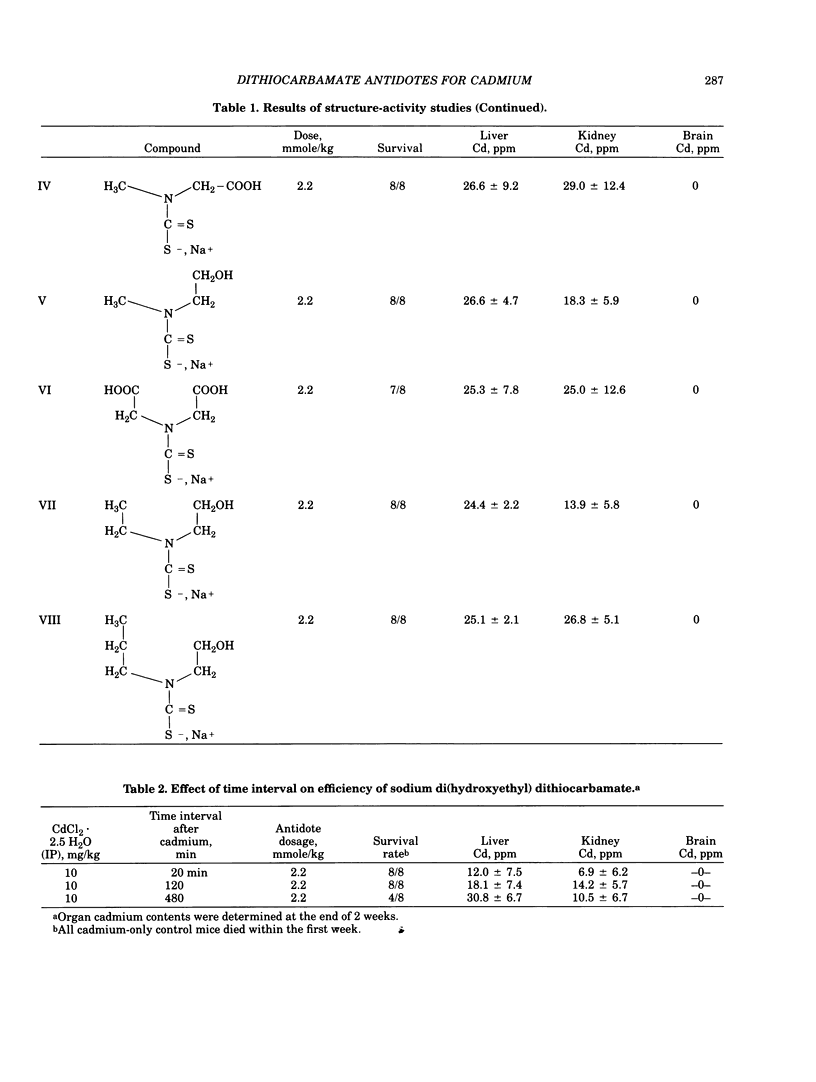

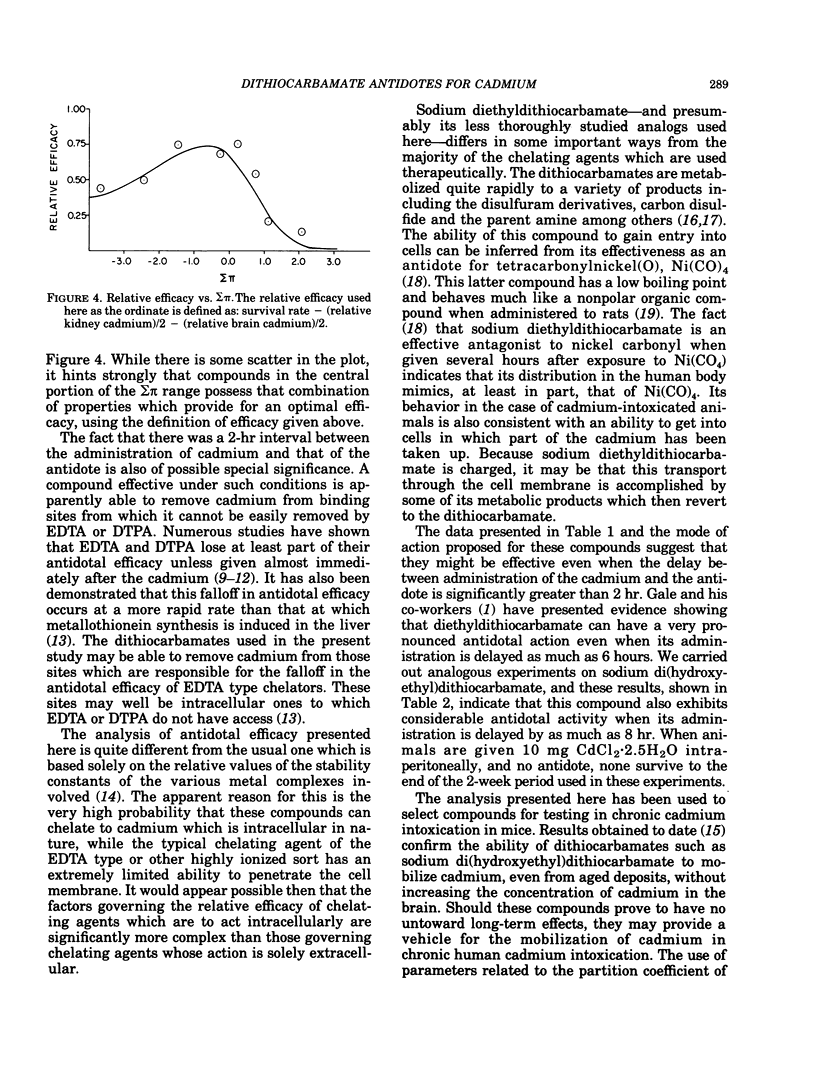
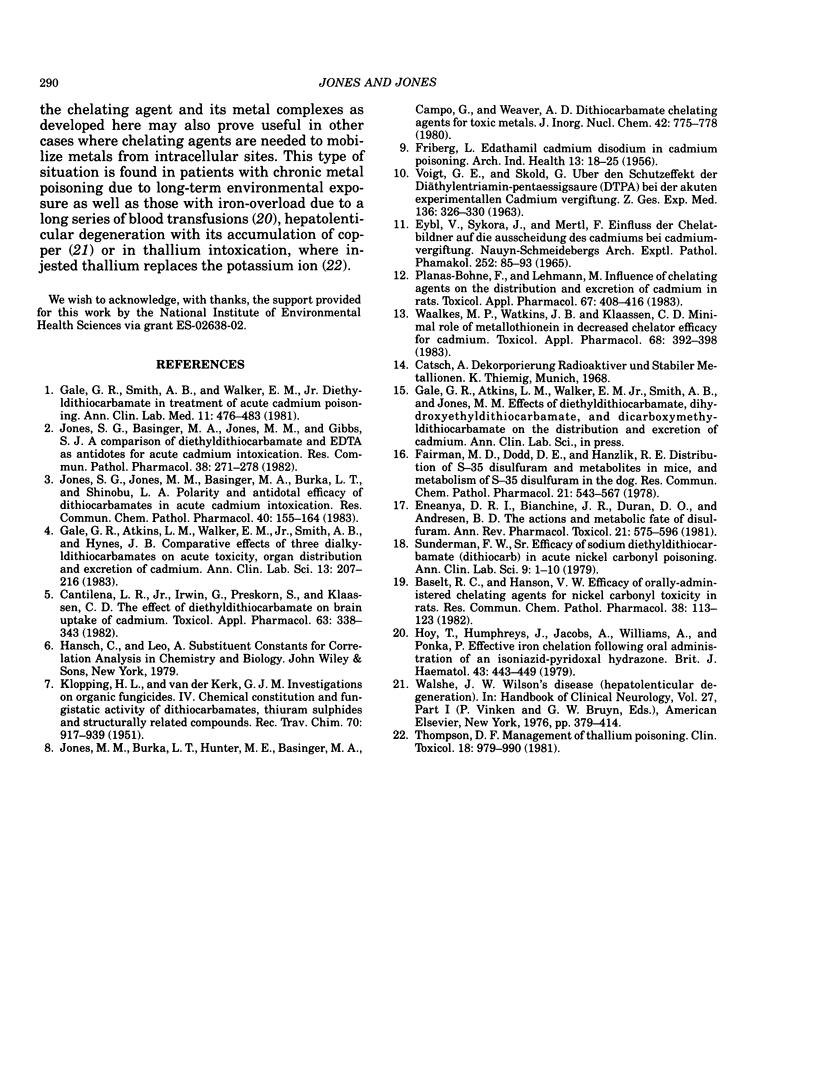
Selected References
These references are in PubMed. This may not be the complete list of references from this article.
- Baselt R. C., Hanson V. W. Efficacy of orally-administered chelating agents for nickel carbonyl toxicity in rats. Res Commun Chem Pathol Pharmacol. 1982 Oct;38(1):113–124. [PubMed] [Google Scholar]
- Cantilena L. R., Jr, Irwin G., Preskorn S., Klaassen C. D. The effect of diethyldithiocarbamate on brain uptake of cadmium. Toxicol Appl Pharmacol. 1982 May;63(3):338–343. doi: 10.1016/0041-008x(82)90262-9. [DOI] [PubMed] [Google Scholar]
- Eneanya D. I., Bianchine J. R., Duran D. O., Andresen B. D. The actions of metabolic fate of disulfiram. Annu Rev Pharmacol Toxicol. 1981;21:575–596. doi: 10.1146/annurev.pa.21.040181.003043. [DOI] [PubMed] [Google Scholar]
- Eybl V., Sýkora J., Mertl F. Einfluss der Chelatbildner auf die Ausscheidung des Cadmiums bei Cadmiumvergiftung. Naunyn Schmiedebergs Arch Exp Pathol Pharmakol. 1965 Nov 4;252(1):85–93. [PubMed] [Google Scholar]
- FRIBERG L. Edathamil calcium-disodium in cadmium poisoning; a study of the excretion, distribution, and toxicity of cadmium in animals. AMA Arch Ind Health. 1956 Jan;13(1):18–23. [PubMed] [Google Scholar]
- Faiman M. D., Dodd D. E., Hanzlik R. E. Distribution of S35 disulfiram and metabolites in mice, and metabolism of S35 disulfiram in the dog. Res Commun Chem Pathol Pharmacol. 1978 Sep;21(3):543–567. [PubMed] [Google Scholar]
- Gale G. R., Atkins L. M., Walker E. M., Jr, Smith A. B., Hynes J. B. Comparative effects of three dialkyldithiocarbamates on acute toxicity, organ distribution, and excretion of cadmium. Ann Clin Lab Sci. 1983 May-Jun;13(3):207–216. [PubMed] [Google Scholar]
- Gale G. R., Smith A. B., Walker E. M., Jr Diethyldithiocarbamate in treatment of acute cadmium poisoning. Ann Clin Lab Sci. 1981 Nov-Dec;11(6):476–483. [PubMed] [Google Scholar]
- Hoy T., Humphrys J., Jacobs A., Williams A., Ponka P. Effective iron chelation following oral administration of an isoniazid-pyridoxal hydrazone. Br J Haematol. 1979 Nov;43(3):443–449. doi: 10.1111/j.1365-2141.1979.tb03771.x. [DOI] [PubMed] [Google Scholar]
- Jones S. G., Basinger M. A., Jones M. M., Gibbs S. J. A comparison of diethyldithiocarbamate and EDTA as antidotes for acute cadmium intoxication. Res Commun Chem Pathol Pharmacol. 1982 Nov;38(2):271–278. [PubMed] [Google Scholar]
- Jones S. G., Jones M. M., Basinger M. A., Burka L. T., Shinobu L. A. Polarity and antidotal efficacy of dithiocarbamates in acute cadmium intoxication. Res Commun Chem Pathol Pharmacol. 1983 Apr;40(1):155–164. [PubMed] [Google Scholar]
- Planas-Bohne F., Lehmann M. Influence of chelating agents on the distribution and excretion of cadmium in rats. Toxicol Appl Pharmacol. 1983 Mar 15;67(3):408–416. doi: 10.1016/0041-008x(83)90325-3. [DOI] [PubMed] [Google Scholar]
- Sunderman F. W. Efficacy of sodium diethyldithiocarbamate (dithiocarb) in acute nickel carbonyl poisoning. Ann Clin Lab Sci. 1979 Jan-Feb;9(1):1–10. [PubMed] [Google Scholar]
- Thompson D. F. Management of thallium poisoning. Clin Toxicol. 1981 Aug;18(8):979–990. doi: 10.3109/15563658108990328. [DOI] [PubMed] [Google Scholar]
- VOIGT G. E., SKOELD G. [On the protective effect of diethylenetriaminepenta-acetic acid (DTPA) in acute experimental cadmium poisoning]. Z Gesamte Exp Med. 1963;136:326–330. [PubMed] [Google Scholar]
- Waalkes M. P., Watkins J. B., Klaassen C. D. Minimal role of metallothionein in decreased chelator efficacy for cadmium. Toxicol Appl Pharmacol. 1983 May;68(3):392–398. doi: 10.1016/0041-008x(83)90283-1. [DOI] [PubMed] [Google Scholar]


